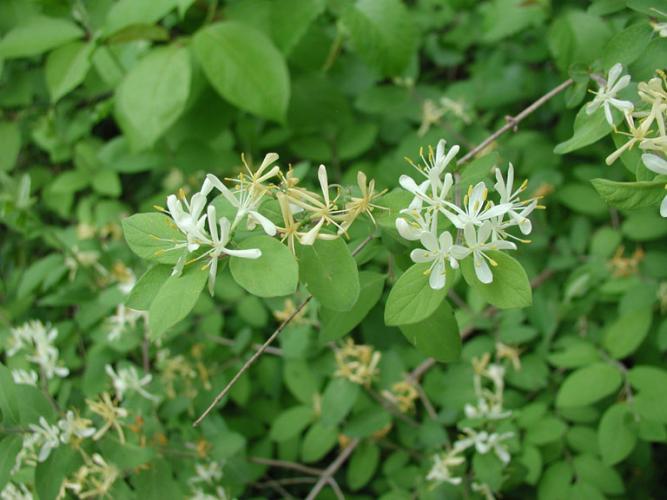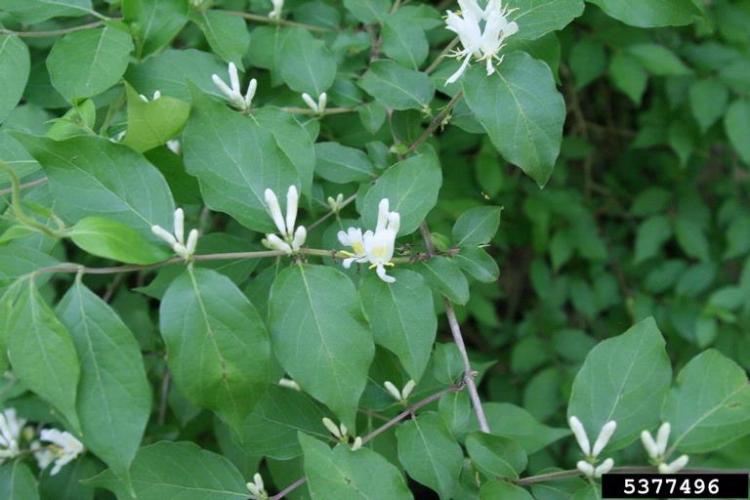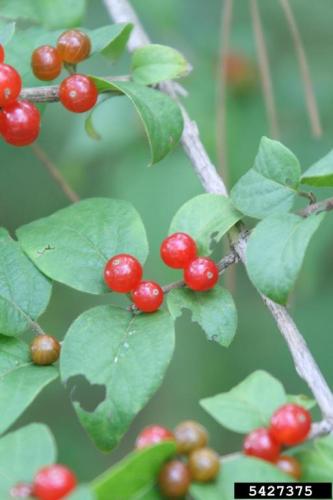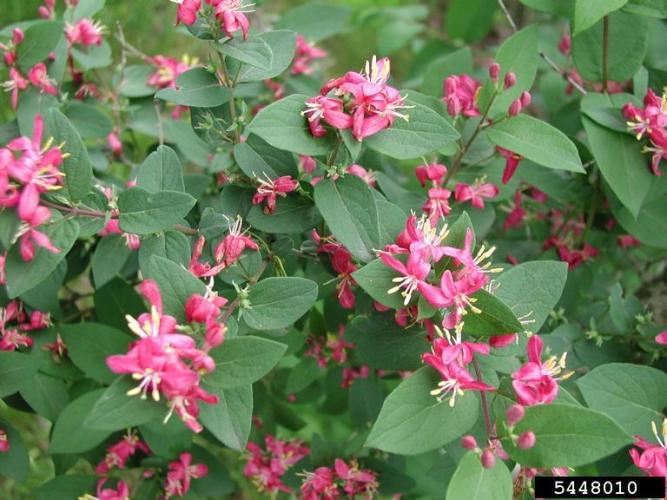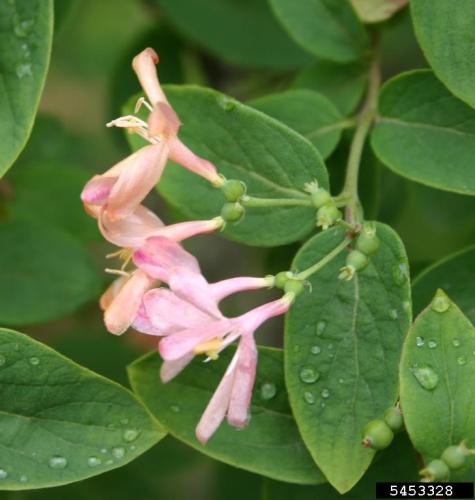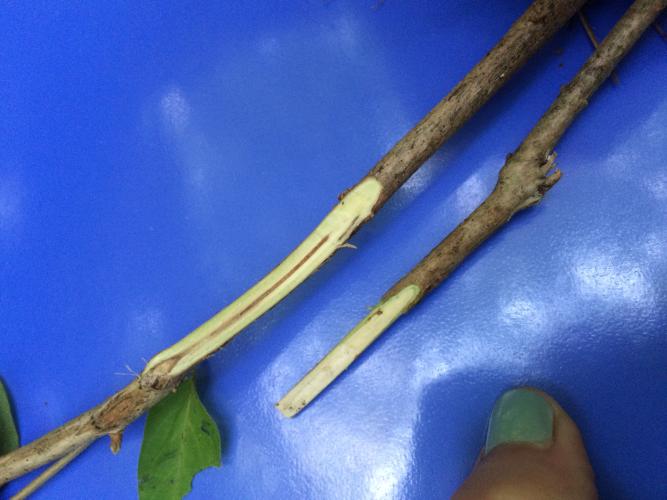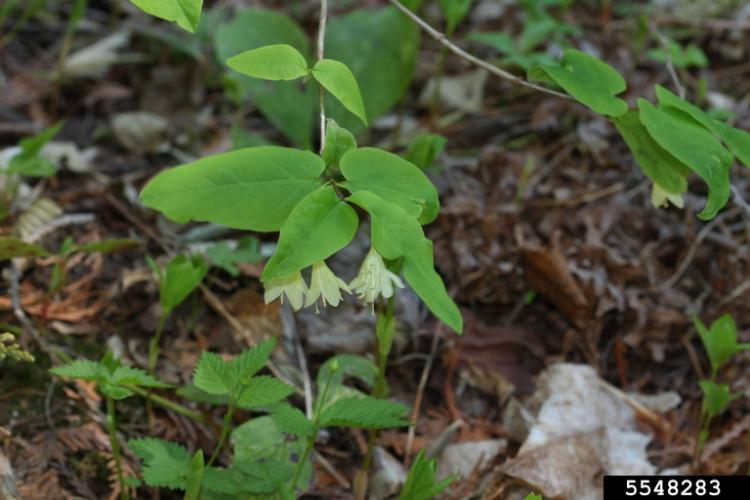Honeysuckles, Shrub
Identification
There are four invasive species of bush honeysuckle that invade Vermont forests. These include Amur honeysuckle (Lonicera maackki), Morrow’s honeysuckle (Loniceria morrowii), Tartanian honeysuckle, (Lonicera tatarica) and Bell’s honeysuckle (Lonicera x bella). All of them are deciduous shrubs with opposite, egg shaped leaves, fragrant flowers, and red or orange-red berries. They can grow to be 15 feet high.
The four invasive species are difficult to distinguish from one another. The most important thing to know is how to tell it apart from native honeysuckle. All of the invasive honeysuckle species found in Vermont have a hollow pith. Native honeysuckle has a solid white pith and is not typically as robust of a shrub as the invasives.
***Check out the downloadable fact sheet above***
Biology
Ecological Threat
These invasive species compete with native plants for sunlight, moisture and pollinators. And while birds eat the fruit, it is poorer in fats and nutrients than fruits from native plants, so the birds do not get enough nutrients to help sustain long flights during migrations.
Origin
Asia, Shrub or bush honeysuckles were introduced to North America for use in landscaping, erosion control and wildlife cover. Unfortunately, these plants then spread throughout much of the country.
Habitat
Forest, forest edge, floodplains, meadows, fields, disturbed areas
Life Cycle
Shrub honeysuckles reproduce mainly by seed but some vegetative re-sprouting can occur in established populations. Plants mature between 3-5 years of age. Each plant produces thousands of berries as fruit, and each fruit contains 2-6 seeds. Seeds can remain viable for 3-5 years.
Vermont Distribution
How You Can Help
NATIVE/NON-INVASIVE ALTERNATIVES
Northern Spicebush (Lindera benzoin), alternate leaved dogwood (syn. Pagoda dogwood) (Swida alternifolia), black chokeberry (Aronia melanocarpa)
Native Perennials and Shrubs for Vermont Gardens
Alternatives to Common Invasive Plants and Characteristics of Select Alternatives
Citations
PHOTO CREDIT
Morrow honeysuckle, 2308047, Leslie J. Mehrhoff, University of Connecticut, CC by 3.0
Tatarian Honeysuckle, 5448010, Leslie J. Mehrhoff, University of Connecticut, CC by 3.0
Amur Honeysuckle, 5377496, Chris Evans, University of Illinois, CC Non-com 3.0
Bell’s Honeysuckle, 5453328, Leslie J. Mehrhoff, University of Connecticut, CC 3.0
Twinned berries, 5427375, Chris Evans, University of Illinois, CC Non-com 3.0
Native plant, American Honeysuckle, 5548283, Rob Routledge, Sault College, CC 3.0
INFORMATION CREDIT
Vermont Chapter of The Nature Conservancy
Video: River Bank Media, Honeysuckle
Pennsylvania DCNR, Honeysuckles
Invasive.org, Morrow, Tatarian, Bell's, Amur Honeysuckle
